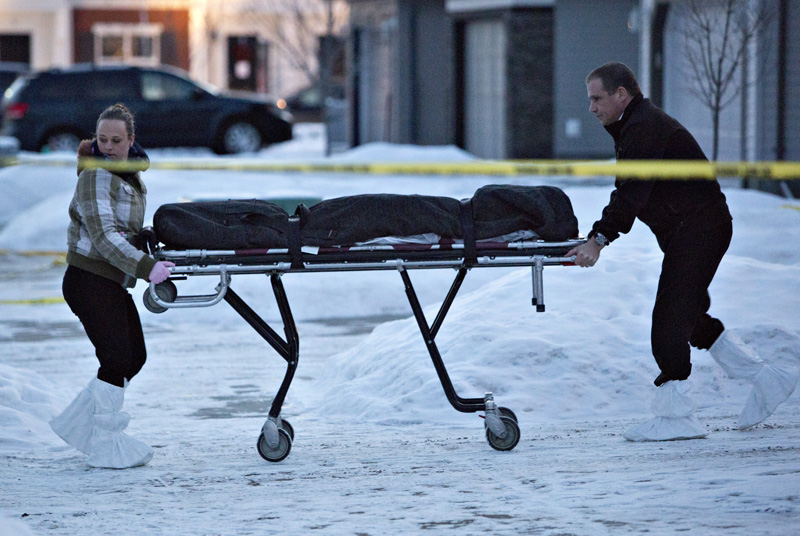Stricter storage rules would help to curb Alberta’s soaring rates of gun theft, a retired Ontario Provincial Police officer says.

“In policing, we know that if you make it easy for people to steal, they will,” says Doug Carlson, a retired OPP staff sergeant who ran northwestern Ontario’s gun control system.
Last week Alberta RCMP reported that gun thefts there had doubled in three years. About 40 per cent of the thefts were from vehicles, police said.
Alberta’s Chief Firearms Officer did not respond to a request for comment Wednesday.
“I suspect that people are openly leaving their vehicles parked somewhere with their firearms sitting in a rack behind the seat, like we did years ago,” Carlson says.
Right now, the law requires handguns left in unattended vehicles to be trigger-locked and locked in the trunk or out of sight in the vehicle. Long guns should be locked in the trunk or hidden.
Carlson thinks that law should be strengthened to require handguns be kept in a lock box secured to the car itself.
“When I was a cop, we’d transport our weapons in lock boxes, and the lock boxes were cable-locked to the frame of the vehicle. You couldn’t take the lock box out of there.”
For gun storage at home, Carlson favours a safe — something the law doesn’t require.
“A locked safe is probably one of the best things you could have.”
“You bolt your safe to the floor, or the frame of your house. Any copper knows that most thefts are spur-of-the-moment things. If you’re going make it easy for somebody to steal something, they’ll steal it.”
Gun owners could also take the extra security step of disassembling their firearm and storing the parts separately, to make them less attractive for thieves. Bolts, for example, are easily removed from bolt-action rifles, Carlson said.
“(Semi-automatic handguns) all disassemble basically the same. You can store the slide somewhere in another lock box with your ammunition or whatever. Lots of different firearms work that way.”
Top stolen firearms in Canada, 2000-12

SOURCE: GLOBAL: NEWS ANALYSIS OF THE NATIONAL FIREARM REGISTRY
From 1999 to mid-2011, 48,969 firearms (out of eight million) were reported stolen in Canada. The vast majority stayed stolen – only 4,162 were eventually recovered.
Fourteen of those were automatic weapons, including Thompson sub-machine guns and an Uzi.
Stolen guns are frequently used in crimes months or years later.
A 9mm handgun stolen in Surrey, B.C. in 2006 was used in an eight-victim mass killing in Edmonton in December 2014.
Toronto police estimate about 30 per cent of the city’s crime guns were once owned legally within Canada – the rest were smuggled from the United States.
Gun thieves tend to be much more interested in some kinds of guns than others. Thirteen years of gun theft data shows a preference for handguns over shotguns and rifles, and for semi-automatic actions in rifles and handguns.

GRAPHIC BY JANET CORDAHI




Comments